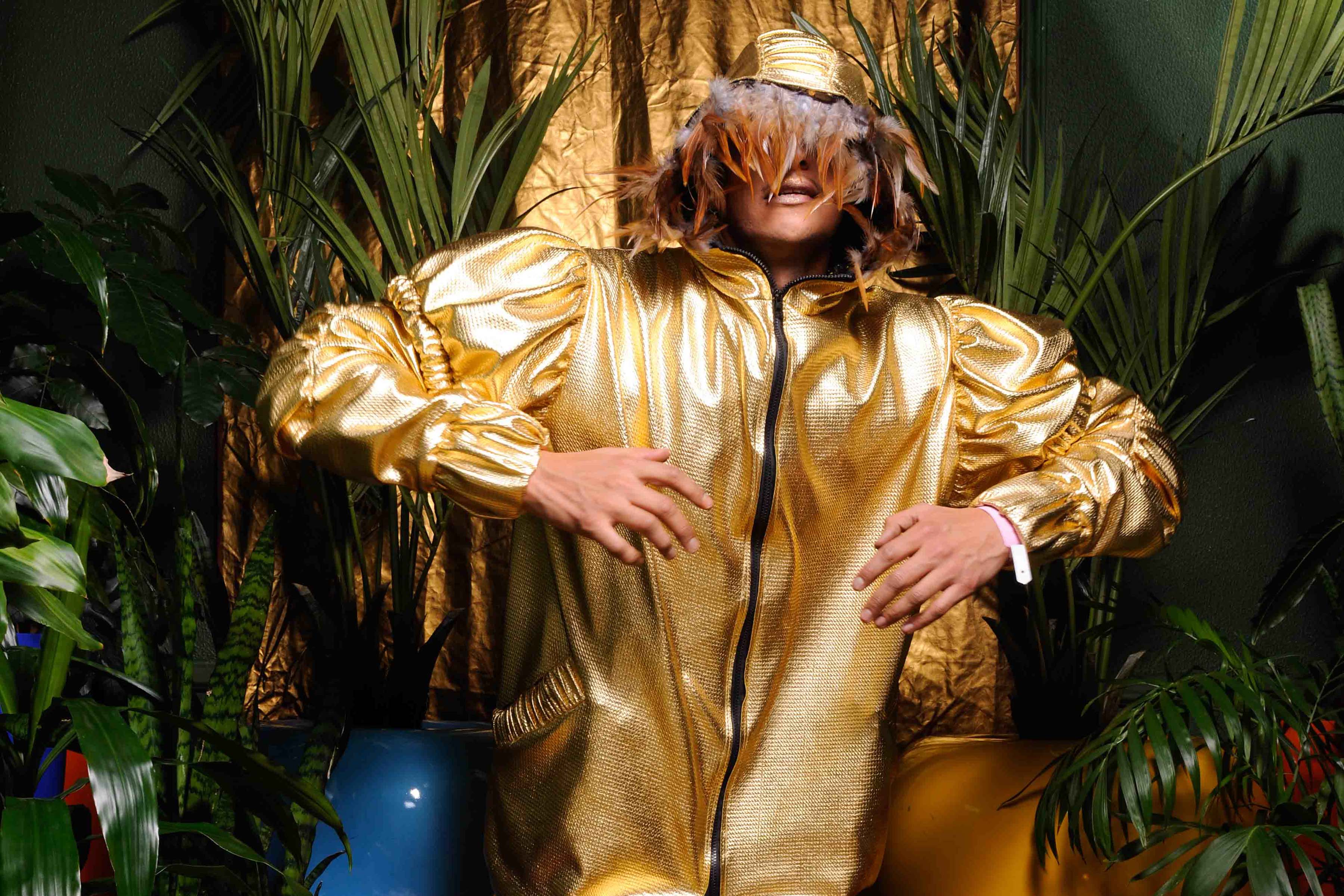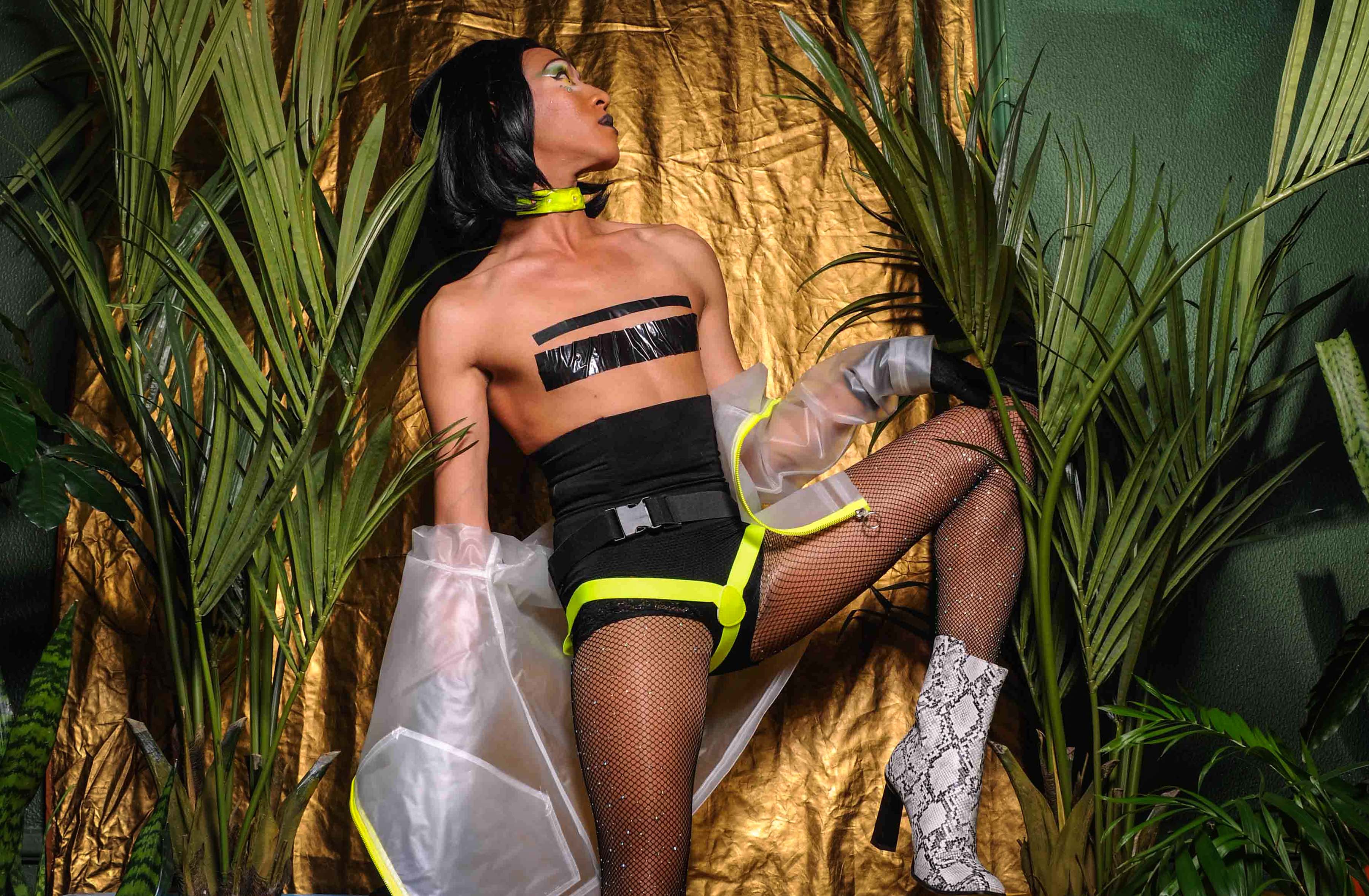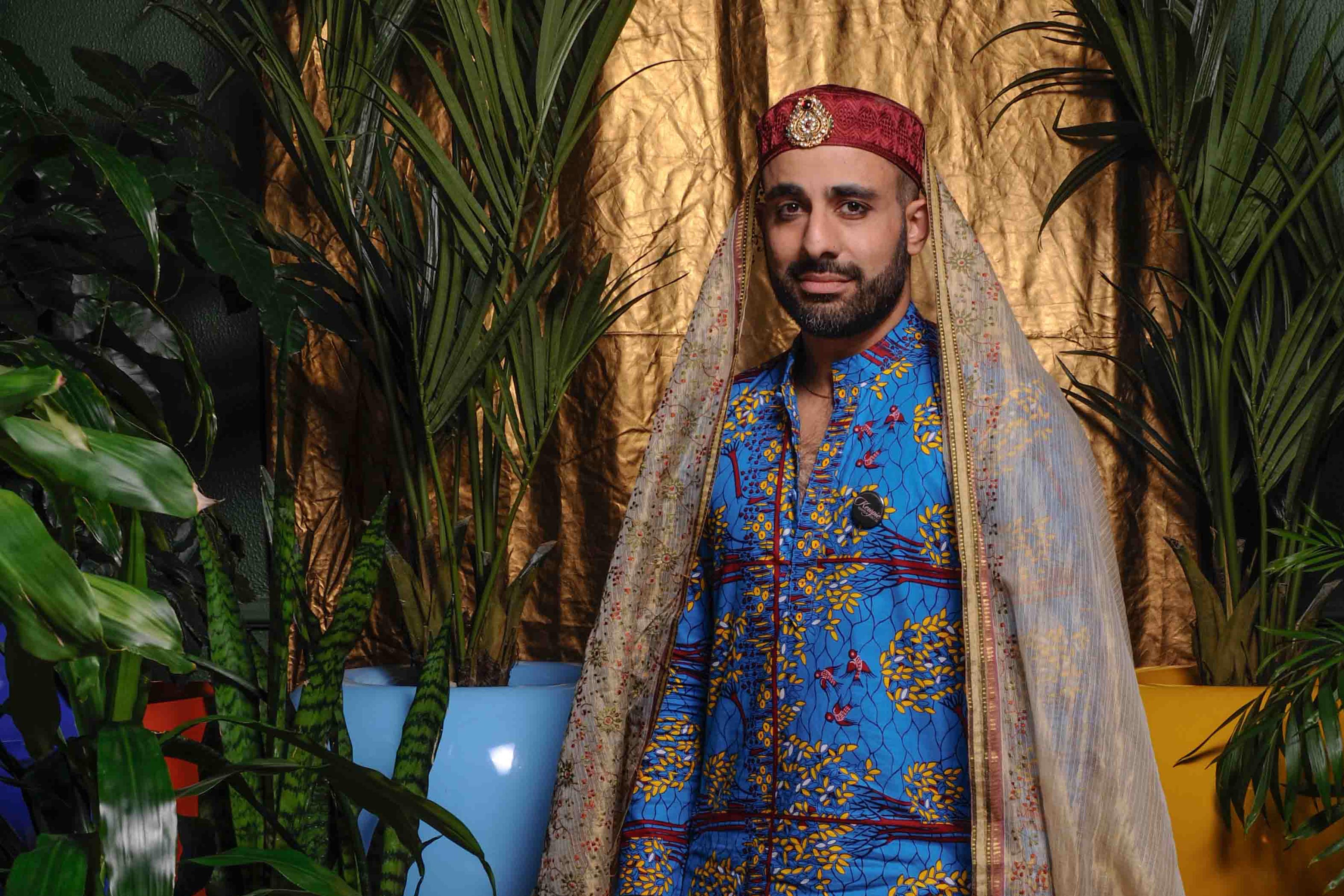Performers Winnie Wakanda Washington (left) and ball organiser Treyvone Moo. Le Grand Ball is the new kid on the proverbial block offering queer folk a ballroom-inspired safe space. (Leeroy Jason)
There was something completely different about this competition’s backstage dressing room. There were exclamations of insecurity, sure. But here, they came in the form of “Fuck, I’m so pretentious”.
PROMOTEDMake this Summer the best everGet the Samsung Galaxy A30s and R250 Online Voucher for R299 PMx24 On Smart XS+ Buy Now.Vodacom | vodacom.co.zaPleasantries, meanwhile, came in the shape of “Thank you, ho”. For boosting morale, there was the odd “It’s going down, bitch”.
Costumes – a thick winter blanket wrapped precariously atop one contestant’s head, for example – were ludicrously over-the-top. Bottles of Savannah Dry, gin and dry lemon and, bizarrely, cartons of vanilla-flavoured custard littered tables filled with make-up. Unlit cigarettes dangled lazily from contestants’ pouting lips as they readied themselves for this competition with a difference: Le Grand Ball.
The Ball, held at The Tennis Club Johannesburg on Saturday 3 August, is the brainchild of Mandima Qunta and Treyvonne Moo aka the Original Hunty, who, as Mother of the Ball, is something akin to Jozi’s very own Pray Tell, the character played by Billy Porter in the award-winning series Pose, which centres trans and queer stories set in New York’s ballroom scene.
The birth of ballroom

Kieron Jina walked the runway for the House of Diamonds. (Leeroy Jason)
In the journal Engendering space: Ballroom culture and the spatial practice of possibility in Detroit, Marlon Bailey looks into “the ways in which black lesbian, gay, bisexual and transgender (LGBT) members of the ballroom community create black queer space to contend with their spatial exclusion from and marginalisation within public and private space”. Bailey defines ballroom culture as “a community and network of black and Latina/o LGBT people”.
The 1990 documentary Paris is Burning chronicled the New York ballroom scene and shed light on the counterculture and its importance for, particularly, economically disenfranchised, black queer people. In the same year, Madonna’s smash hit Vogue put ballroom culture – and its central dance style, voguing – firmly on everybody’s lips.
Decades later, the cultural phenomenon is still not only alive and kicking but also seeing offshoots popping up in countries around the world, South Africa being one of them. As to what drew them to establish Le Grand Ball, Moo says: “I got really inspired [to put the ball together] after a friend was attacked at a club event that was supposed to be gay. This friend is trans.
“After they got attacked, I was like, ‘How the fuck do you get attacked outside a place that is supposed to be a safe space?’ This shook me,” Moo says in a voice still hoarse from delivering vocal high jinx as the event’s MC a few days prior. “I was like, ‘No, this cannot be a real thing, where gender non-conforming bodies just really, really do not have a space in the world.’ It shook me to my core. I was like I need to create a space where everybody – whatever your gender variant – has a place.”
A space centring safety

Werk Sally was a judge on the night of The Ball. (Leeroy Jason)
Now only in its second iteration, Le Grand Ball is the new kid on the proverbial block offering queer folk a ballroom-inspired safe space. Zane Lelo Meslani started Vogue Nights Jozi in June last year.
“Being a DJ, I have seen how, in club spaces, queer bodies are generally not accepted and are often violated or mistreated,” Meslani says of his reasons for kicking off the series of events. “So, it’s basically just us creating a space for ourselves through this culture that has been present for many years.”
Moo, who identifies as non-binary, adds: “If, as South Africans, we have a Constitution that is as celebrated as ours, our lack of visibility within an urban setting is neither appropriate nor believable. Visibility, for me, is paramount in everything I do. Everything. I believe that once you become visible, you can be seen. And once you are seen, you become respected. And once you are respected, you can then become a full human being.”
Bradley Rink is a senior lecturer at the University of the Western Cape who specialises in mobilities, cities and urban identities. Rink says that for marginalised individuals and communities, this push for visibility is “how they establish their sense of belonging [and] become their genuine and true selves – both in the public and private realm, because there is no negotiation between the two. Like, ‘I have to be someone else; I have to straighten out now’.
“When trans and gender non-conforming people draw that line and carry it through from the private to the public realm, they are their true selves, always. And that’s important, that staying true to one’s self. Whereas other people have to police themselves, for gender non-conforming people, if they carry on being who they are, it is very difficult for them in the public space. But that is the essence of visibility: being out there; saying who you are.”
Back at Le Grand Ball, The Tennis Club is filled with all manner of queers, who, each in their unique way, are “saying who they are”. There are boys in leather and denim, girls in feathered headdresses and Afro-print and people dressed in very, very little – dancing, drinking, loving and being, in a mix of high heels, crop tops and traditional attire, their selves imagined into existence. The venue is packed.
Localised cultural import

Keval Harie, director of Gay and Lesbian Memory in Action, was also a judge during the event. (Leeroy Jason)
Backstage, the contestants cheer as a photographer snaps away at one of them: “Work it!” “Serve!” “Beauty!” “Yaaas!”
But, being such a uniquely American culture, how, if at all, is the culture being localised?
“It’s still sort of a work-in-progress, right,” says Moo. “But creating categories in the ball that are truly South African, like Skhothane Reloaded Opulence or African King and Queen Royalty, was super important for me. Also, creating a space specifically for African bodies that reclaim our space as South African black bodies was super, super important for me.
“I really wanted to ensure that it’s not just a copy and paste of an American cultural phenomenon, that we [localise] it and make sure we own it. Even the runway music we use is from South Africa. We are trying to reshape it, using our own mix of paints and colouring it.”
Meslani concurs. “Look,” he says, “we know that, in ballroom, there is the specific style of dancing, which is voguing. So at our events there are those who vogue, but there are also those who don’t.
“Even though we have had workshops this year on how to do basic arm movements, dips, spins and stuff like that – just to get the basics right – at the last event, in the Dance-Off category, there were people dancing in the way that they know best: vosho, kwaskwasa, stuff like that. Just really moving in their own way, without being restricted to this one style of dancing. And in an American ball, you’ll never see that. Even the walking, the way people dress, it’s all very unique to us.”
Liziwe Kwanini is the Mother of the House of Skebengas. “I think that, as much as we want to Africanise it, we need to be honest with ourselves that this is an American thing,” she says, adding: “So, I don’t think we need to Africanise it, but we need to adapt it to us. I don’t think we need to change what is already existing, but rather tailor it to suit us. With this ball, the music was very us, the categories were very us.”
Towards a queer utopia
During her set, which kicked off Le Grand Ball, Annalyzer, dressed in hessian and with what was once an animal attached to her shoulder, repeatedly belted into the microphone: “Semenya! Semenya! Semenya!”
Later, ending off her set, she screamed into the 400-plus crowd: “Amandla!” “Awethu,” they responded. “Amandla LGBTI,” she boomed.
As the Mother of Ball, Moo was in fine form. “For this category, we need someone who beat their face into submission” and “Serve the children!” they commanded as the “children” of the various houses – Diamonds, Royals, Curiosity and Skebengas – took to the stage. One donned nothing more than a G-string, all-in-one fishnets, a nun’s habit and enormous, glowing, square-shaped nipples. The effect was heady, the energy electric.
Kwanini, who describes herself as a queer ally, says it is this that initially drew her to ballroom culture. “You can literally be anyone at the ball,” she says. “Like, literally, you can live your wildest dream on that stage and go back to your normal life. But those five minutes of dreams being lived out is what fuelled a lot of people, especially the people who started the culture.
“So for me, it is literally about living your best life on that stage, at that particular time. Even if the world around you is crumbling, you are having that moment just to, like, express yourself; to be the best possible you. And that is vital. Very, very vital.”
Rink likens this to “a queer utopia”.
“There are a lot of writers who talk about the generative power of utopia,” he writes. “It’s not just about dreaming, it’s about how [being in] this utopia – even if only for a few minutes – pushes one forward in thinking about boundaries. It is a place where you can dream really big. But sometimes it’s false. Like, you’re fabulous in drag on the stage, but then you have to dismantle all of that and go back to your former self when you leave the pageant. So, there is a sense of the false facade of this utopia.
“But,” he adds, “just being in that utopian space allows one to push the boundaries in ‘the real world’. It’s as though because you’ve performed it, you’ve lived it. It is this that then ultimately helps one push the boundaries, and allows one to reimagine the future.”
This article was first published by New Frame.